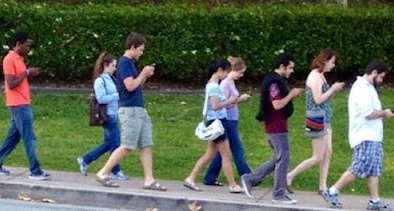If you want to see a rare sighting of critical thinking in the modern classroom, observe a class in which a teacher is trying to go over the results of a recent test. For whatever reason, it is at this precise moment that students immediately develop an intense ability to critically analyze and creatively interpret information. They instantly develop very obscure and off-the-wall interpretations that most people could never possibly think of, even with the obvious answer sitting right in front of them. I sometimes think students intentionally pick an obscure answer just so that they can argue it later.
“Well, you could have read choice ‘b’ this way…” or “Once, you briefly mentioned this fact and that could be applied to choice ‘c’.”
We all know the student didn’t read choice “b” that way or they weren’t applying an obscure reference to choice “c”- they simply want extra points back on their test.
Rather than becoming exasperated by this behavior, teachers should learn to exploit it. Compile a list of poorly worded test questions. Ideally these are multiple choice questions with either no or multiple correct answers.
As a warm-up or culminating activity, give a question on the topic you are studying to your students. Give the students a copy of the question on a half sheet of paper so that they can get their hands on it, mark-it up, and really analyze it. Projecting the question puts too much distance between them and the material. You want them to get intimate with the question, dissect it, and tear it apart. Students struggle to do this when the question is physically far away from them.
Introduce them to the activity by labeling it as a “bad question”. We don’t want the students to think this is a standard question (otherwise they’ll just ignore it). Also, you will pique their interest by telling them it is a real question used on a test before or written in a supplement to their textbook. This will give them an opportunity to prove their value to the tribe by criticizing an elder (of another tribe).
Example:

The question above is a good example of a questionable question. The problem with option “a” is that it is too vague. The students will identify that “often wins without winning the popular vote,” is referring to the concept of a misfire election. However the more advanced students will point out that this happened in 2000 (and three additional times) which many people would argue is too often.
In option “c”, the students will hopefully recognize that the Supreme Court has no official role in the Electoral College. But this statement could illicit a response from your more argumentative students who could claim that the decision in Bush v. Gore that ended the Florida recount is an example of the Supreme Court choosing a president.
Option “d” is almost true. Candidates do focus on states with larger populations if they are winnable. This is the concept of the “swing state.” Many students will note that California, New York, and Texas (three of the most populous states) are not swing states, and therefore candidates actually spend very little energy there.
And option “e” is a true statement, but how does it relate to the “Electoral College”?
The students are reviewing key concepts such as misfire elections, roles of the branches in the Electoral College, and swing states. A student must have a good factual understanding of the concepts in order to see that many of these questions choices are debatable.
If you would like to extend this activity for a longer review, have each group of students create their own questionable question. Have them take a concept and develop a standard multiple choice answer that their peers could argue over.
PaleoPrinciples:
- Simplicity: The only material required for this assignment is a poorly worded question. All teachers have either written or used a test question that students have made unique and compelling arguments about. Create a database of these. If you cannot find one, make one. Take a good multiple choice question and make a slight alteration making an answer close to being true.This activity can be a simple warm-up activity that can take anywhere from five to fifteen minutes. A series of questionable questions can be combined into one document for a more indepth review activity.
- Focus on Skills: Again, we are trying to develop critical analysis skills. Although we are providing students with a multiple choice question, the discussion about the problems with its wording are limitless. The choices should be such that it would be difficult to determine what the correct answer would be. The students need to be able to argue and articulate why there could be multiple interpretations to a portion or portions of the question.
- Communal/Social Goal: This activity is done aloud as a class. The students will feed off of each other’s responses. They will add to what other students say or disagree with them saying they have read too much into the question. This activity works best if the initial discussion happens in small groups and then is gone over as a class.
